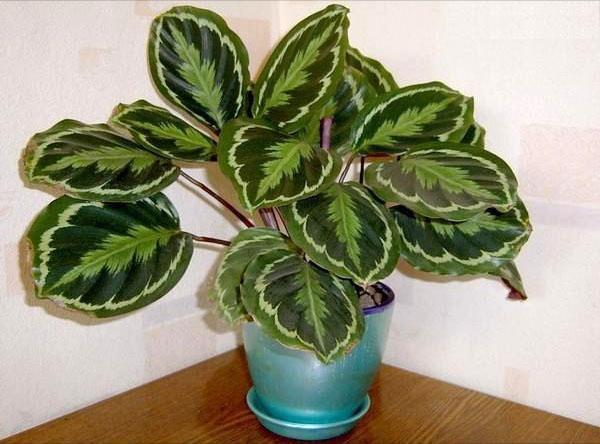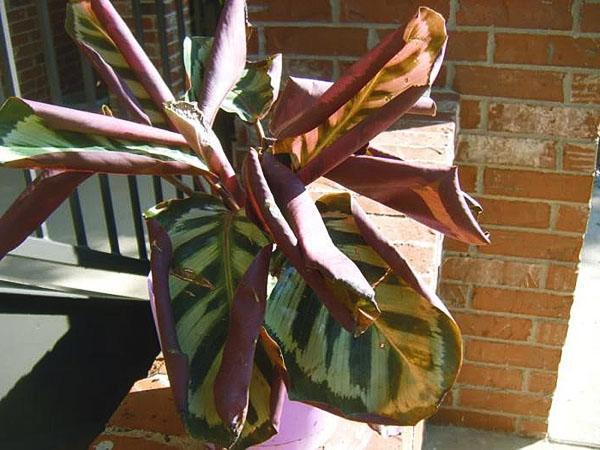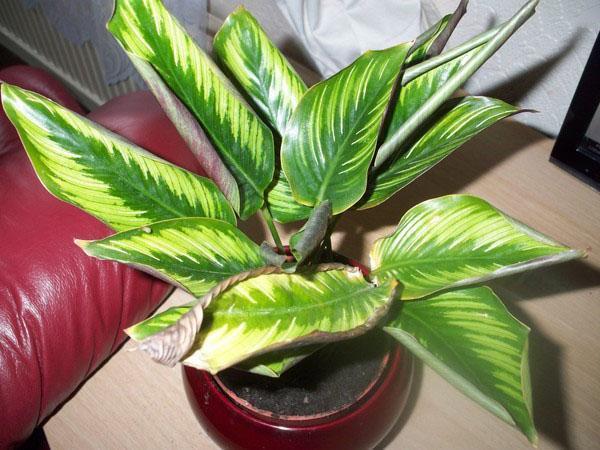Why do your calathea leaves dry and curl
 The calathea plant obeys only experienced and skilled growers. If leaves dry and curl on kalatea, this is a signal of improper care. Before you buy a beauty, you need to calculate your strength, take a critical look at your experience in caring for capricious plants. There is nothing sadder than dying flowers in an apartment. Caring for calathea is difficult, but a beautiful healthy flower will delight even more.
The calathea plant obeys only experienced and skilled growers. If leaves dry and curl on kalatea, this is a signal of improper care. Before you buy a beauty, you need to calculate your strength, take a critical look at your experience in caring for capricious plants. There is nothing sadder than dying flowers in an apartment. Caring for calathea is difficult, but a beautiful healthy flower will delight even more.
How to read plant signals correctly

If the plant has been living in an apartment for a long time, but suddenly the very tips of the leaves began to dry out, the reason is not difficult to find. The humidity has changed, the heating may have been turned on, and the air has become drier. Or maybe the plant was moved to a new place, it is protesting.
If the leaves of the calathea are just curled up into a tube, perhaps too much light falls on the plant and it defends itself, leaving less surface for photons. When the plate is not only curled, but darkened, acquires a brown tint, then the plant does not have enough moisture in the pot. If at the same time the leaves of the calathea dry, then the air is also dry. If you do not take action, the plate will dry out and fall off.
 Are there spots on the leaves? Remember, when moistened, whether large spots formed on the leaves. Perhaps they were hit by a sunbeam and, as through a lens, burned.
Are there spots on the leaves? Remember, when moistened, whether large spots formed on the leaves. Perhaps they were hit by a sunbeam and, as through a lens, burned.
The leaves must be examined for insect colonization. The ubiquitous aphids, spider mites, thrips, whiteflies are dangerous. At the same time, the whitefly is the most difficult insect to drive out.
At the first signs, as soon as the tugor of the leaves is broken, you need to look for the cause until the leaves change their appearance. Calathea's disease can be caused by:
- watering with cold or hard water;
- lack of nutrition or inadequacy of the soil to the requirements of the plant;
- a sharp change in conditions of detention.
Doesn't like the flower of surprises in its content, does not forgive mistakes, and calathea responds by drying and curling the leaves.
Everything needs a measure
 You bought and brought into the house a beautiful calathea. In a store or in a greenhouse, she grew up in different conditions. The plant needs to be adapted, and for this, find a permanent place for the bush:
You bought and brought into the house a beautiful calathea. In a store or in a greenhouse, she grew up in different conditions. The plant needs to be adapted, and for this, find a permanent place for the bush:
- light, but shaded;
- warm, but without heat and drafts;
- moderately moist, but without stagnant dampness.
There should be no devices with electromagnetic radiation nearby. There is no tobacco smoke floating in the room, no loud rock sounds, classical music is playing. A stranger should like such a room, but she needs to be adapted. To do this, wipe the leaves with a damp cloth, or create a fog with a very fine spray. Put a plastic bag on top of the plant, but so that there is air in it and it does not lie on the leaves. Remove the package every day for a longer period, accustoming the plant to the home atmosphere. Perhaps, after such an adaptation, the question of why the leaves of the calathea dry up will not arise.
It is impossible to immediately correct a mistake in caring for a capricious flower. Over-watering or spraying is just as harmful as a lack of them. Therefore, if the tips of the leaves dry on the calathea, you need to gradually and gradually change the situation. That is, first moisten the leaves, but not much.Indeed, during evaporation, the surface temperature decreases, and the leaf will receive new stress. A special humidifier, battery-powered diapers, a pallet with moss will save the day.
 Perhaps, creating an air bubble of a film around the flower will help to cope with dryness, under which the humidity will be stable. In the most extreme cases, thus, amateurs save the leaves until the central heating is turned off. Epin can be added to the irrigation water for better resilience.
Perhaps, creating an air bubble of a film around the flower will help to cope with dryness, under which the humidity will be stable. In the most extreme cases, thus, amateurs save the leaves until the central heating is turned off. Epin can be added to the irrigation water for better resilience.
If the plant suddenly lowered green leaves, this is a sign of a pot bay. Do not water the plant for several days. You can take out the bush and inspect for decay. You can urgently change the ground.
The reason why the calathea dries may be as underfeeding, or excessive fertilizing... Flowering varieties need special fertilizers. But for any tropicana, an excess of nitrogen and the presence of calcium in the soil is harmful. Therefore, it is impossible to water calathea with hard water, the soil deteriorates. She is already gradually poisoned by her own secretions of the roots. After a while, feeding will not be absorbed, the earth needs to be replaced.
That is why young plants are transplanted annually, and after four years, every two years. In this case, the soil is selected special, with the addition of charcoal and vermiculite. The availability of land from a coniferous forest will create a more suitable substrate.
If you follow all the conditions for keeping a flower, it will become a habit, it will delight for a long time with amazingly beautiful foliage and even flowering.